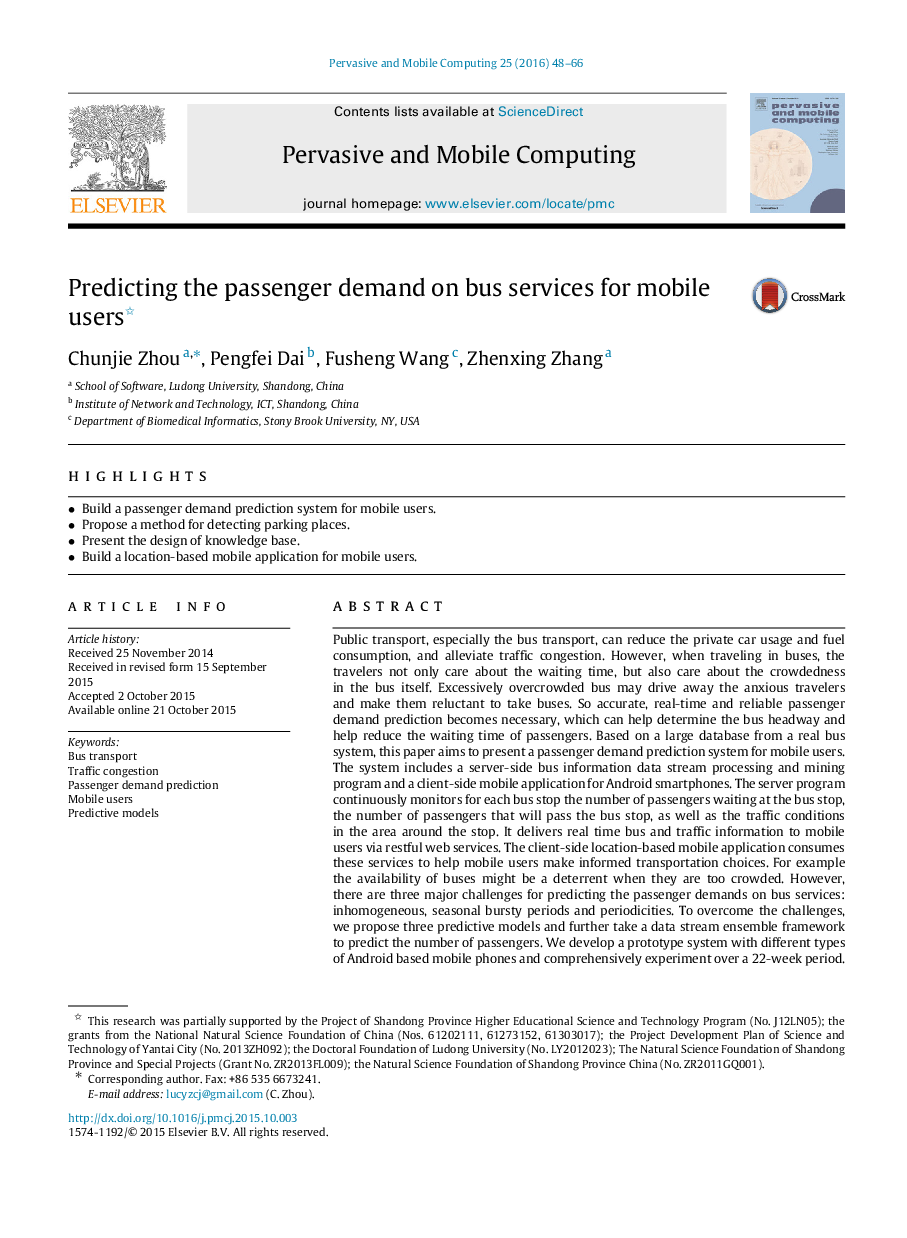| Article ID | Journal | Published Year | Pages | File Type |
|---|---|---|---|---|
| 465899 | Pervasive and Mobile Computing | 2016 | 19 Pages |
•Build a passenger demand prediction system for mobile users.•Propose a method for detecting parking places.•Present the design of knowledge base.•Build a location-based mobile application for mobile users.
Public transport, especially the bus transport, can reduce the private car usage and fuel consumption, and alleviate traffic congestion. However, when traveling in buses, the travelers not only care about the waiting time, but also care about the crowdedness in the bus itself. Excessively overcrowded bus may drive away the anxious travelers and make them reluctant to take buses. So accurate, real-time and reliable passenger demand prediction becomes necessary, which can help determine the bus headway and help reduce the waiting time of passengers. Based on a large database from a real bus system, this paper aims to present a passenger demand prediction system for mobile users. The system includes a server-side bus information data stream processing and mining program and a client-side mobile application for Android smartphones. The server program continuously monitors for each bus stop the number of passengers waiting at the bus stop, the number of passengers that will pass the bus stop, as well as the traffic conditions in the area around the stop. It delivers real time bus and traffic information to mobile users via restful web services. The client-side location-based mobile application consumes these services to help mobile users make informed transportation choices. For example the availability of buses might be a deterrent when they are too crowded. However, there are three major challenges for predicting the passenger demands on bus services: inhomogeneous, seasonal bursty periods and periodicities. To overcome the challenges, we propose three predictive models and further take a data stream ensemble framework to predict the number of passengers. We develop a prototype system with different types of Android based mobile phones and comprehensively experiment over a 22-week period. The evaluation results suggest that the proposed system achieves outstanding prediction accuracy among 86,411 passenger demands on bus services, more than 78% of them are accurately forecasted.
